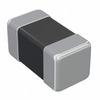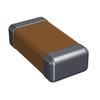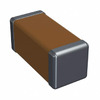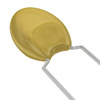[{1 1}]
2024-09-04
4981
Catalog

Figure 1: Radio Spectrum
Exploring the Radio Spectrum
The radio spectrum is a major segment of the electromagnetic spectrum, which encompasses a variety of radiation types, including radio waves, visible light, infrared, and ultraviolet rays. It is basic to understanding how electromagnetic waves behave and interact with the environment. This spectrum is divided into distinct frequency ranges, each characterized by specific wavelengths and frequencies that define their technological uses.
The diverse wavelengths and frequencies within the radio spectrum enable a broad range of applications. Lower frequencies, such as those in the LF, MF, and HF bands, excel in long-distance communications. They achieve this by reflecting off the ionosphere, allowing signals to cover vast distances. In contrast, higher frequencies, like VHF, UHF, and EHF, are more suitable for secure, point-to-point connections and satellite communications. Their shorter wavelengths allow for more focused beams, higher data transfer rates, and reduced interference, making them ideal for bandwidth-intensive applications.
Each frequency band serves distinct technological purposes:
Low Frequency (LF) - Best for long-range communication needs, including maritime navigation and broadcasting.
Medium Frequency (MF) - Typically used for AM radio broadcasting, providing wide-area coverage.
High Frequency (HF) - Focal for international broadcasting and communications in maritime and aviation sectors, where signals rely on ionospheric reflection for long-distance transmission.
Very High Frequency (VHF) and Ultra High Frequency (UHF) - Demand for FM radio, television broadcasting, and cellular networks, where clear and reliable signals are major.
Extremely High Frequency (EHF) - Used in advanced communication systems, including point-to-point and satellite communications, as well as radar, where high data transfer rates and precision are required.
ITU Frequency Bands Designations
The International Telecommunications Union (ITU) plays a major role in managing the global radio spectrum. To ensure standardized usage across the world, the ITU divides the spectrum into twelve distinct frequency bands, labeled with terms like VLF, LF, MF, and HF. These designations are focal for organizing how different frequencies are utilized worldwide.

Figure 2: ITU Frequency Bands Designations
Historically, these bands were categorized based on wavelength. However, to enhance precision, the ITU now uses frequency-based classifications. The boundaries of these bands are set at specific powers of ten (1 x 10n). For instance, the HF band is clearly defined from 3 MHz to 30 MHz. This systematic structure, as outlined in the ITU Radio Regulations, enables a clear and efficient allocation of frequency resources, addressing diverse technological needs and regional considerations.
Operators must work within these ITU designations when establishing communication systems. They carefully choose frequencies by analyzing the characteristics of each band and aligning them with the intended purpose of the communication system. Basic factors include propagation conditions, potential sources of interference, and adherence to international regulations. The operation of these systems requires detailed frequency management, where operators continuously adjust settings to respond to real-time environmental changes and regulatory demands. This meticulous process is demanded to maintain communication reliability and clarity, showcasing the complex challenges that professionals face in the field.
Properties and Applications of Radio Spectrum Bands
Radio frequency bands cover a wide range of frequencies, each with distinct properties that make them suitable for specific technological uses. For instance, frequencies above 300 GHz are heavily absorbed by atmospheric molecules, rendering the Earth's atmosphere nearly opaque to these high frequencies. On the other hand, higher near-infrared frequencies experience less atmospheric absorption, allowing for clearer transmissions.
Each band's unique properties lend themselves to particular applications:
Lower Frequencies (below 3 MHz) - These are ideal for long-distance communication, such as AM radio, because they can reflect off the ionosphere and cover vast distances.
Medium Frequencies (3 MHz to 30 MHz) - These frequencies are used for a mix of broadcasting and communication, offering a balance between range and clarity.
High Frequencies (30 MHz to 300 MHz) - These bands are perfect for FM radio and television broadcasts, particularly in urban areas where their clear propagation is an advantage.
Ultra High Frequencies (300 MHz to 3 GHz) - Used in mobile phone networks and GPS systems, these frequencies provide a good compromise between range and the capacity to carry large amounts of data.
Extremely High Frequencies (30 GHz to 300 GHz) - Suitable for high-resolution radar and satellite communications, these frequencies can handle large data transmissions but are sensitive to atmospheric conditions like rain.
When selecting radio frequencies for different applications, operators must consider how atmospheric effects, such as ionospheric reflection and tropospheric scattering, influence signal propagation. These factors are especially in demand for long-range and satellite communications. For example, HF band communications are highly dependent on ionospheric conditions, requiring operators to adjust frequency choices based on factors like the time of day and solar activity to maintain reliable communications.
Extremely Low Frequency (ELF) Band
The Extremely Low Frequency (ELF) band, ranging from 3 to 30 Hz, features extraordinarily long wavelengths between 10,000 km and 100,000 km. This unique characteristic makes it ideal for underwater submarine communications, as ELF signals can penetrate deep into ocean waters, enabling communication with submerged submarines across vast distances.

Figure 3: ELF Band
Given the immense wavelength, conventional antennas would need to be impossibly large to function effectively at these frequencies. To overcome this, specialized techniques are used to transmit ELF signals. Large ground-based installations are typically employed, often consisting of extensive networks of cables and vast terrestrial antenna systems spread over many kilometers. These setups are engineered to generate the significant power and specific electromagnetic fields required to propagate ELF waves effectively.
Operating within the ELF band demands careful coordination and maintenance. Transmission power must be meticulously managed to ensure clear communication, despite the signal's slow propagation and vulnerability to interference from various geophysical phenomena. Operators must continuously monitor and adjust the system, taking into account variations in atmospheric and ionospheric conditions that could impact signal clarity and range.
Super Low Frequency (SLF) Band
The Super Low Frequency (SLF) band, ranging from 30 to 300 Hz with wavelengths between 1,000 km and 10,000 km, is focal for undersea communication with submarines. These long wavelengths allow SLF signals to penetrate deep into ocean waters, making them invaluable in situations where higher frequencies are ineffective.

Figure 4: Super Low Frequency (SLF) Band
However, the SLF band has a significant limitation—its narrow bandwidth, which restricts both signal speed and data transmission rates. Therefore, SLF communications are often used for brief, strategically important demand information. This band is especially needed in environments where stable communications and other frequencies cannot effectively cover (such as deep sea).
Working within the SLF band involves specialized equipment and precise technical procedures. Signal generation requires large antenna systems or extensive ground networks designed to efficiently transmit these low frequencies. Operators must carefully manage the transmission settings to counteract the slow signal propagation and reduce the impact of noise, which can distort communication.
Ultra Low Frequency (ULF) Band
The Ultra Low Frequency (ULF) band, covering frequencies from 300 to 3,000 Hz, falls within the range audible to human ears. This band is primarily used for communication with submarines and in subterranean environments like mines, where conventional surface communication methods fail.

Figure 5: ULF Band
The basic advantage of ULF frequencies is their ability to penetrate deep into water and earth, allowing reliable communication in environments where higher frequency signals would struggle. This capability makes ULF waves major for certain industrial and military operations, where maintaining signal integrity in challenging conditions is focal.
Working with ULF frequencies requires advanced technology and precise operational techniques. The equipment must be designed to handle low-frequency signals, guaranteeing they remain stable over long distances. Operators must carefully manage these transmissions, adjusting for potential interference from natural or artificial electromagnetic sources that could degrade signal quality.
Very Low Frequency (VLF) Band
The Very Low Frequency (VLF) band, spanning 3 to 30 kHz, plays a major role in submarine communications, VLF radio navigation systems, and geophysical applications like ground-penetrating radar. While the bandwidth is limited and wavelengths are long, these features make the VLF band particularly effective in specialized fields.
VLF frequencies are uniquely capable of penetrating deep into water and soil, making them ideal for communicating with submerged submarines and exploring underground structures. In navigation, VLF signals are focal for long-range radio systems that guide ships and aircraft in environments where GPS is unavailable.
Operating within the VLF band requires precise management of signal transmission and reception. Operators must continually adjust and calibrate equipment to address the challenges posed by the long wavelengths and limited bandwidth. This includes carefully controlling signal strength to ensure penetration through deep mediums and fine-tuning frequencies to minimize interference from natural and artificial sources.
Low Frequency (LF) Band
The Low Frequency (LF) band, ranging from 30 to 300 kHz, is a required range for traditional radio communications. It supports a variety of applications, including navigation systems, time signal transmissions for synchronizing radio-controlled clocks, and longwave broadcasting widely used in Europe and Asia. This band’s versatility underscores its importance in both communication and broadcasting.
LF frequencies are particularly valued for their ability to travel long distances via ground wave propagation, making them ideal for maritime and aeronautical navigation aids. This long-range capability also makes LF frequencies suitable for broadcasting across large geographic areas without relying on satellite or cable infrastructure.
Operating within the LF band requires precise management of transmission power and antenna configurations. Operators must ensure that signals are transmitted effectively over long distances while adhering to international regulations to prevent cross-border interference. Continuous monitoring and adjustment of equipment are focal, as varying atmospheric conditions can impact signal propagation.
Medium Frequency (MF) Band
The Medium Frequency (MF) band, covering 300 kHz to 3 MHz, is best known for hosting the medium wave broadcast band. Although this traditional broadcasting method has declined with the rise of digital technologies, the MF band remains required for maritime communications and amateur radio, particularly in areas less served by modern advancements.
A basic strength of the MF band lies in its ability to support long-distance communication, especially at night. During these hours, signals can travel far via skywave reflection off the ionosphere. This capability is especially valuable in maritime environments, where reliable communication is focal for safety and navigation.
Operating within the MF band demands careful frequency selection and precise modulation techniques to maximize both reach and clarity. Operators must continuously monitor atmospheric conditions, as these greatly affect skywave propagation. Adjusting transmission parameters in response to ionospheric changes is basic for maintaining effective communication.
High Frequency (HF) Band
The High Frequency (HF) band, covering 3 to 30 MHz, is focal for long-distance radio communications, utilizing the ionosphere to bounce signals across vast distances. This unique capability makes the HF band highly adaptable to changing conditions influenced by solar activity and atmospheric variations.
HF communications are basic for applications that require international reach, such as global broadcasting services, and are major for aeronautical communications, where long-range reliability is a safety necessity. Even with the rise of satellite technology, the HF band remains required, particularly in regions with limited satellite access or where redundant communication links are focal for demanding operations.
Operating within the HF band requires a deep understanding of ionospheric behavior. Operators must skillfully adjust frequencies and transmission power to adapt to the daily and seasonal shifts in the ionosphere, guaranteeing effective communication. This involves making real-time adjustments based on continuous monitoring of atmospheric conditions to maintain signal clarity and maximize reach.
Very High Frequency (VHF) Band
The Very High Frequency (VHF) band, spanning 30 to 300 MHz, is primarily used for line-of-sight communications, with signals affected more by tropospheric conditions than by the ionosphere. This makes the VHF band ideal for applications requiring clear, direct transmission paths, such as FM and digital audio broadcasting, certain television transmissions, and amateur radio operations.
The VHF band is widely favored for its ability to deliver reliable, high-quality audio and video broadcasts over large areas without the need for extensive infrastructure that higher frequencies often demand. It is also a demand component of public safety networks, including police, fire, and emergency medical services, where clear and immediate communication is focal.
Working with the VHF band requires operators to skillfully manage transmission equipment to optimize signal strength and reduce interference. This often involves the precise alignment and positioning of antennas to ensure line-of-sight connectivity. Adjustments to transmitter settings and antenna placement are regularly needed to adapt to environmental changes, such as weather conditions that can impact signal propagation.
Ultra High Frequency (UHF) Band
The Ultra High Frequency (UHF) band, ranging from 300 to 3,000 MHz, is major for a variety of modern communication applications due to its high bandwidth. It is extensively used in television broadcasting, Wi-Fi, and short-range wireless communications. The UHF band’s capacity for line-of-sight transmissions makes it a foundational element in today’s wireless communication systems, particularly in mobile phone networks and Internet of Things (IoT) applications.
The high frequency of the UHF band allows for the rapid transmission of large amounts of data over short distances, making it especially valuable in densely populated urban areas where fast data transfer and reliable connectivity are focal. This capability is demand for the complex demands of IoT ecosystems, where devices must communicate quickly and efficiently.
Operators working with UHF transmissions must account for the band’s sensitivity to physical obstructions and atmospheric conditions, which can impact signal clarity and range. This requires careful placement and ongoing maintenance of antennas to optimize coverage and reduce interference, necessitating precise technical expertise and regular adjustments.
Super High Frequency (SHF) Band
The Super High Frequency (SHF) band, spanning 3 GHz to 30 GHz, is a basic part of the microwave spectrum and is integral to various modern communication technologies, such as mobile phones and wireless LANs. The large bandwidth available in this band enables rapid data transmission, making it focal for the fast-paced exchange of information in today’s digital world.
The SHF band is particularly well-suited for handling high-speed internet connections, streaming services, and the integration of complex communication systems in both commercial and personal settings. Its frequency range is ideal for applications that require the transfer of dense data over short distances, and it is extensively used in satellite communications, where broad bandwidths are needed for high-data-rate applications like HD video broadcasting.
Operating within the SHF band demands precision in antenna design and placement to ensure clear line-of-sight transmission and to reduce signal loss, which is more pronounced at these higher frequencies. Technicians and engineers must constantly monitor and adjust system settings to maintain signal integrity and minimize latency, guaranteeing that networks perform reliably and consistently.
Extremely High Frequency (EHF) Band
The Extremely High Frequency (EHF) band, spanning 30 to 300 GHz and often known as the millimeter wave band, presents significant challenges due to its very short wavelengths. These challenges include the precise manufacturing of components and careful signal handling to avoid the loss and degradation that are more common at these higher frequencies.
Despite these technical hurdles, recent advances in semiconductor and antenna technology have made the EHF band increasingly accessible and valuable for high-speed communication. This frequency range is now demand for technologies such as 5G mobile networks, high-frequency radar systems, and high-capacity point-to-point wireless links.
Working with the EHF band requires meticulous attention to detail in both equipment design and deployment.
Tremendously High Frequency (THF) Band
The Tremendously High Frequency (THF) band, spanning from 300 GHz to 1 THz, represents the cutting edge of modern communication technology, pushing the limits of current semiconductor capabilities. This band features extremely high frequencies and ultra-short wavelengths, offering potential breakthroughs in data transmission speeds and bandwidth.
Progress in THF technology is being driven by ongoing research into materials and devices that can efficiently generate, transmit, and detect THF signals. Innovations in nanotechnology and photonics are at the forefront, addressing the significant challenges of working at such high frequencies, including signal attenuation and the need for hardware miniaturization.
Working with the THF band requires highly specialized equipment and precise operational techniques. Engineers and technicians must have a deep understanding of electromagnetic behavior at these frequencies to manage and mitigate challenges like thermal noise and material absorption, which are particularly pronounced at THz frequencies.
Deploying THF-based systems involves intricate calibration and testing to ensure that components perform reliably under demanding conditions. Real-time monitoring and adaptive adjustments are required to maintain system integrity and performance. This work demands a high level of expertise that blends theoretical knowledge with hands-on experience in high-frequency communication systems.
Conclusions
The intricate landscape of the radio spectrum is foundational to the fabric of global communication systems, profoundly impacting everything from basic radio transmissions to cutting-edge digital communications. The detailed examination of frequency bands from ELF to THF reveals a complex interplay of technological capabilities, operational challenges, and strategic applications. Each band’s unique properties dictate its suitability for specific tasks, whether it’s guaranteeing reliable communication with submerged submarines or facilitating ultra-high-speed data transfers in dense urban environments. Moreover, the evolving regulatory frameworks and technological advancements continually redefine the potential and efficiency of these bands. As we advance, the radio spectrum will undeniably play a basic role in steering innovations in communication technology, supporting not only existing infrastructure but also pioneering future applications that may soon define the next era of technological evolution. This continuous evolution, driven by both necessity and innovation, ensures that the radio spectrum remains at the forefront of technology, adapting to meet the ever-expanding demands of global communication and information exchange.
 FAATATAU IA TATOU
Tagata faamalieina i taimi uma.Agaalofa ma le talitonuina ma fiafia masani.
FAATATAU IA TATOU
Tagata faamalieina i taimi uma.Agaalofa ma le talitonuina ma fiafia masani.
suʻega suʻega.O oloa aupito pito sili ona maualuga tau ma le tautua sili o lo tatou tautinoga faavavau.
![[{1 1}]](/upfile/blog/small_2024090417552227621.png) [{1 1}]
[{1 1}]
2024-09-04
![[{1 1}]](/upfile/blog/small_2024090318235661431.jpg) [{1 1}]
[{1 1}]
2024-09-03
E masani ona fesiligia fesili [FAQ]
1. What is the difference between MF HF and VHF radio?
MF Radio: Typically limited to shorter distances than HF, with the ability to bounce off the ionosphere for medium-range communication, mainly used in AM radio.
HF Radio: Capable of long-distance communication by bouncing radio waves off the ionosphere, used extensively in international and maritime communications.
VHF Radio: Primarily line-of-sight communication with better sound quality than MF and HF but limited to shorter distances, commonly used for FM radio and local TV.
2. What is the frequency range of VHF HF and UHF?
HF (High Frequency): Covers 3 to 30 MHz, used for long-distance communication such as international broadcasts and aviation communications.
VHF (Very High Frequency): Ranges from 30 to 300 MHz, ideal for FM radio, television broadcasts, and line-of-sight communications like walkie-talkies.
UHF (Ultra High Frequency): Extends from 300 MHz to 3 GHz, used for TV broadcasting, mobile phones, and GPS.
3. What is the best radio frequency for long distances?
HF bands (3 to 30 MHz) are generally the best for long-distance radio communications. This is due to their ability to reflect off the ionosphere and cover vast distances, even around the globe, which is why they are popular for international broadcasts and emergency communication services.
4. What is the frequency range of LF?
LF (Low Frequency) covers 30 to 300 kHz. This band is used for a variety of applications, including time signal transmissions and maritime navigation due to its ability to travel long distances, particularly useful over the sea and through obstacles like mountain ranges.
5. How far can MF radio transmit?
MF radio, typically used for AM broadcasting, can reach listeners up to several hundred miles away under normal conditions. By day, transmissions are predominantly via ground waves, which follow the Earth's contour. At night, MF signals can travel much further by reflecting off the ionosphere, enabling them to cover distances across continents under favorable conditions.
VAI VAEGA Numera
 TMK105BJ224KVHF
TMK105BJ224KVHF CC0603GRNPO9BN100
CC0603GRNPO9BN100 12061A101GAT2A
12061A101GAT2A 12065A750FAT2A
12065A750FAT2A 1808GA180KATME
1808GA180KATME TAP337K006HSB
TAP337K006HSB CU4032K115G2
CU4032K115G2 ASSR-5211-501E
ASSR-5211-501E PIC24FJ512GB606-I/PT
PIC24FJ512GB606-I/PT XRT94L31IB-L
XRT94L31IB-L
- SE2565T-R
- MICRF506YML-TR
- VEMT2000X01
- MPXV2010DP
- TMS320F28379SPZPS
- T491B105K035AT7622
- NRVTS245ESFT1G
- CD4099BE
- PCI7612ZHK
- COP8SGE744V8
- LTC3100EUD#PBF
- SN74ALVTH16245GR
- STM32H743IIK6
- T491A225M020ZTZ001
- CC2520RHDT
- 2SA1941/2SC5198
- ADS7865BS-3
- ICS8735AY-01LF
- LM2716MT-ADJ
- LMV922MM
- MAX14744EWC+T
- MAX77803EWJ+T
- MK22FN1MOVLK12
- NT96211FG
- OP262DRU-REEL
- SII160CT100
- STI5514AWDL
- XC2V3000-6BF957C
- 74CBTLV16211DGV
- CY7C109B20VI
- ZXM61P03F
- UPD65945GD-111-LML
- AD80314BCPZRL
- SP106591VLL16
- SPC5644CVLU8
- VI-203-33
- GRM219R61C106MA73
- MSC1214Y4PAG
- 1375191-1